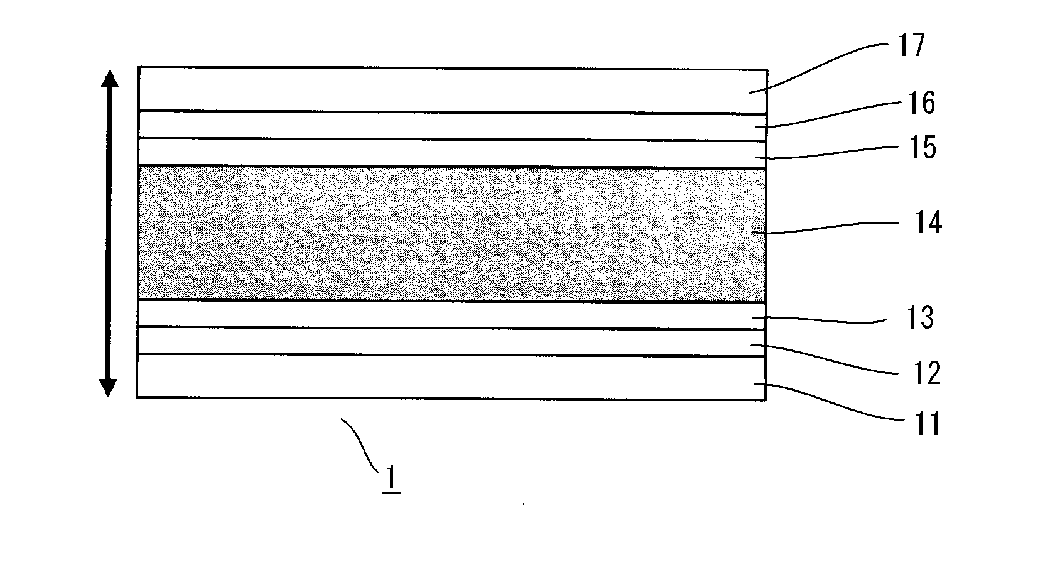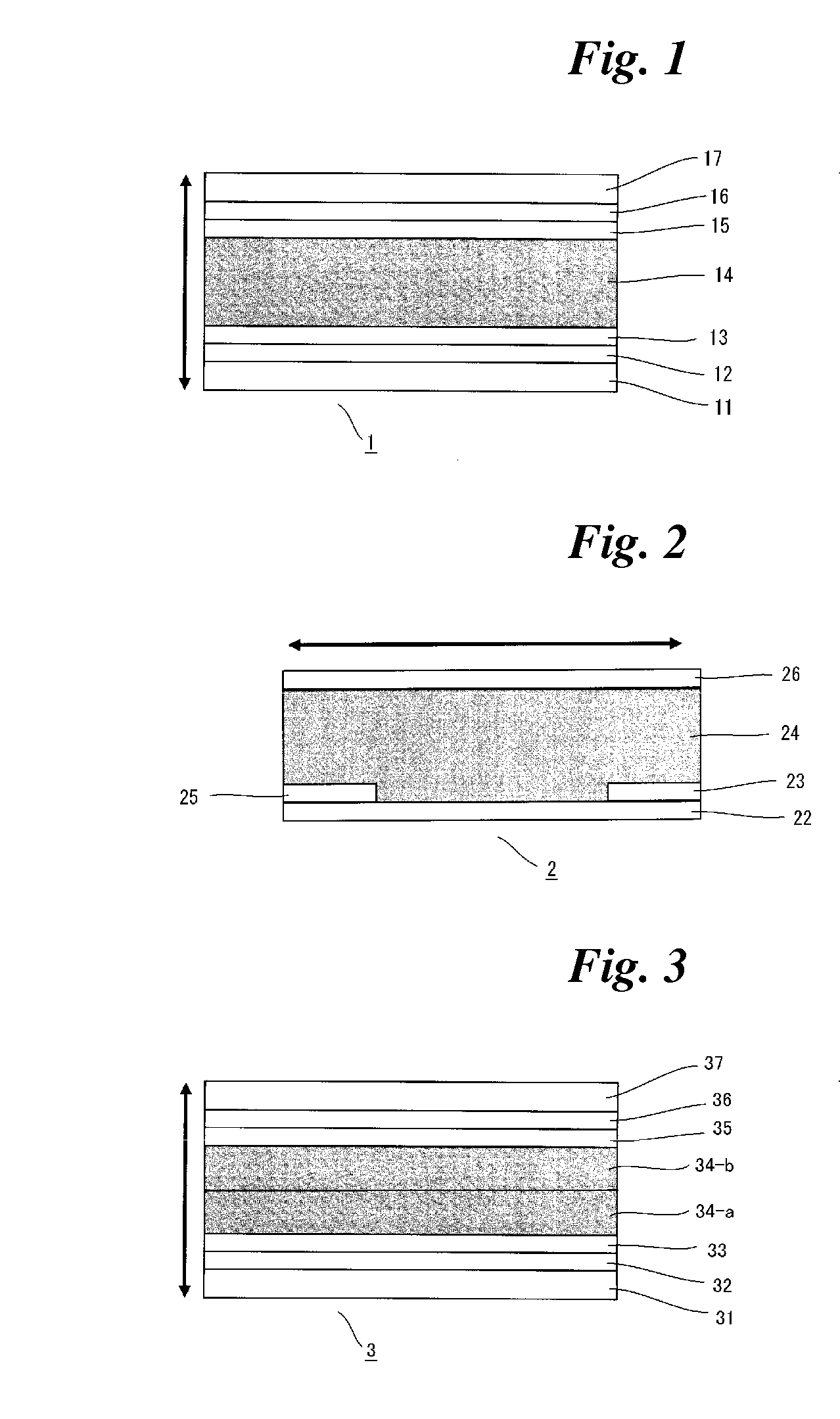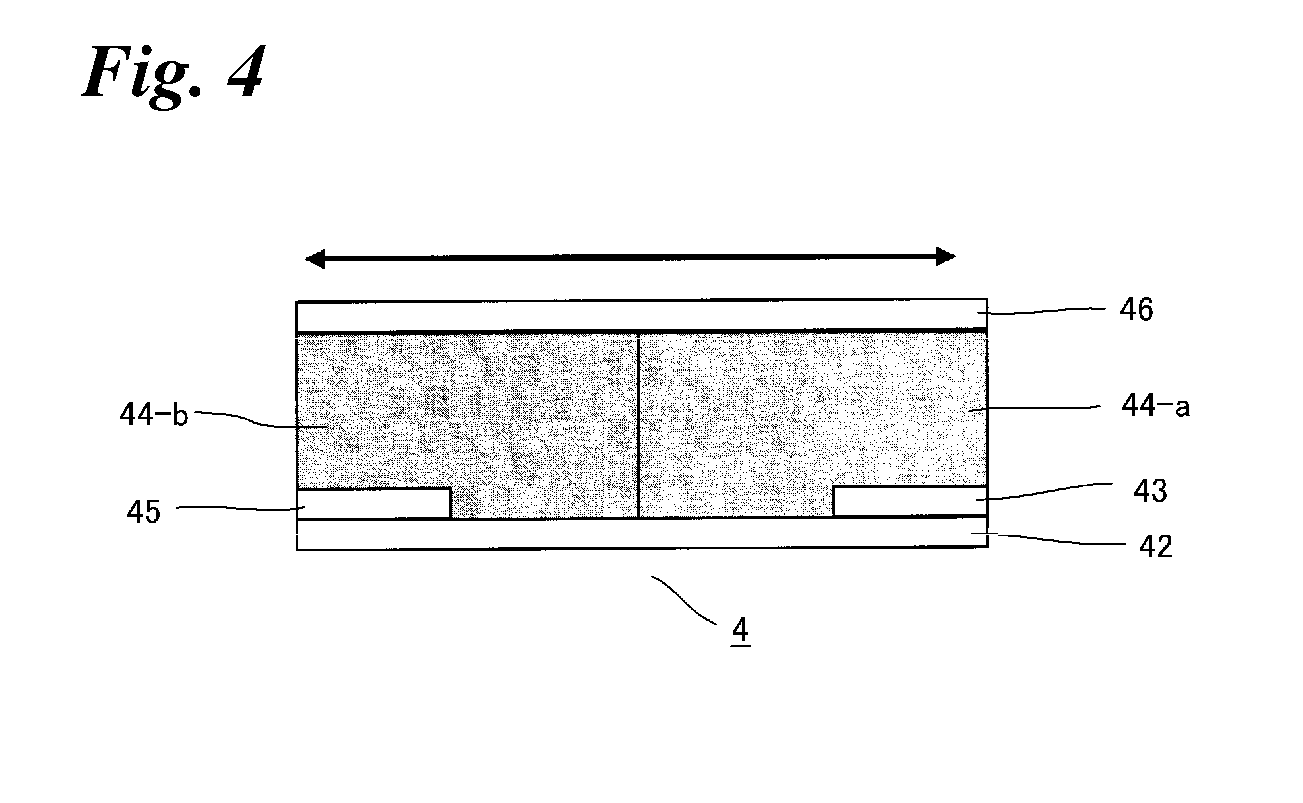Thermoelectric conversion material and thermoelectric conversion element
- Summary
- Abstract
- Description
- Claims
- Application Information
AI Technical Summary
Benefits of technology
Problems solved by technology
Method used
Image
Examples
example 1-1
[0260]8 mg of the conjugated polymer 106 and 2 mg of CNT (ASP-100F, manufactured by Hanwha Nanotech Corp.) were added to 3.8 ml of ortho-dichlorobenzene, and the mixture was dispersed in an ultrasonic bath for 70 minutes. This mixed liquid was applied on a glass substrate and was heated at 80° C. for 30 minutes to distill off the solvent, and then the mixed liquid was dried at room temperature in a vacuum for 10 hours. Thus, a thermoelectric conversion layer having a film thickness of 1.9 μm was formed.
[0261]For the thermoelectric conversion layer thus obtained, the thermoelectric characteristics, liquid dispersibility and film-forming property were evaluated by the methods described below. The results are shown in Table 1.
[Measurement of Thermoelectric Characteristics (ZT Value)]
[0262]With regard to the thermoelectric conversion layer as obtained, a Seebeck coefficient (unit: μV / K), at 100° C., and electrical conductivity (unit: S / cm) were evaluated using a thermoelectric character...
examples 1-2 to 1-3
, Comparative Examples 1-1 to 1-4
[0279]Thermoelectric conversion layers of Examples 1-2 to 1-3 and Comparative Examples 1-1 to 1-4 were prepared and evaluated in the same manner as in Example 1-1, except that the kind of the conjugated polymer and the presence or absence of CNT were changed as indicated in Table 1. The results are shown in Table 1.
TABLE 1LiquidFilm-formingZT valueConjugated polymerCNTdispersibilityproperty(relative value)Ex 1-1Conjugated polymer 106PresenceAA231Ex 1-2Conjugated polymer 109PresenceAA245Ex 1-3Conjugated polymer 110PresenceAA228C Ex 1-1Conjugated polymer 1PresenceAA93C Ex 1-2Conjugated polymer 4PresenceBB89C Ex 1-3Conjugated polymer 3AbsenceAA4C Ex 1-4Conjugated polymer 4AbsenceAA6Ex means Example.C Ex means Comparative example.
[0280]As is clearly seen from Table 1, Examples 1-1 to 1-3 each containing CNT and a conjugated polymer having the particular repeating units, exhibited excellent liquid dispersibility, film-forming property and thermoelectric c...
example 2-1
[0282]3 mg of the conjugated polymer 101, 2 mg of CNT (ASP-100F, manufactured by Hanwha Nanotech Corp.), and 5 mg of polystyrene (430102 manufactured by Sigma-Aldrich Co.) as a non-conjugated polymer were added to 5 ml of ortho-dichlorobenzene, and the mixture was dispersed in an ultrasonic bath for 70 minutes. This mixed liquid was applied on a glass substrate and heated at 80° C. for 30 minutes to distill off the solvent, and then the mixed liquid was dried at room temperature in a vacuum for 10 hours. Thus, a thermoelectric conversion layer having a film thickness of 2.1 μm was formed.
[0283]For the thermoelectric conversion layer thus obtained, the moisture content, thermoelectric characteristics, liquid dispersibility, and film-forming property were evaluated by the methods described below. The results are shown in Table 1.
[Measurement of Moisture Content]
[0284]The moisture content of the thermoelectric conversion layer was calculated by the Karl Fischer method, by dividing the ...
PUM
| Property | Measurement | Unit |
|---|---|---|
| Percent by mass | aaaaa | aaaaa |
| Percent by mass | aaaaa | aaaaa |
| Molar ratio | aaaaa | aaaaa |
Abstract
Description
Claims
Application Information
 Login to View More
Login to View More - R&D
- Intellectual Property
- Life Sciences
- Materials
- Tech Scout
- Unparalleled Data Quality
- Higher Quality Content
- 60% Fewer Hallucinations
Browse by: Latest US Patents, China's latest patents, Technical Efficacy Thesaurus, Application Domain, Technology Topic, Popular Technical Reports.
© 2025 PatSnap. All rights reserved.Legal|Privacy policy|Modern Slavery Act Transparency Statement|Sitemap|About US| Contact US: help@patsnap.com



